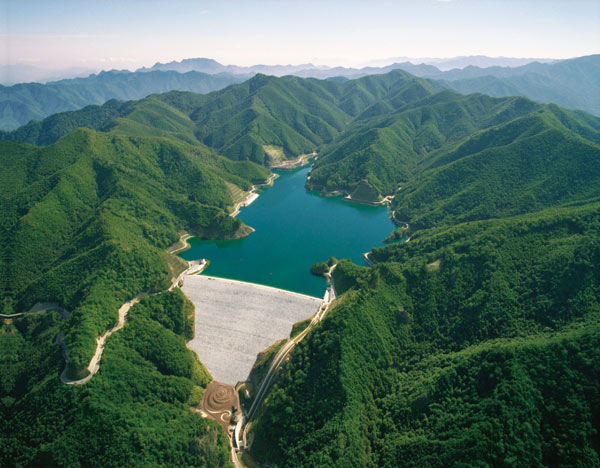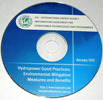Annex VIII - Hydropower Good Practices - Environmental Mitigation and Benefits (Completed 2006)
 Background
Background
Most hydro projects bring important benefits to society, in the form of renewable and sustainable electricity which produces negligible amounts of noxious emissions or greenhouse gases. However, hydropower can sometimes have disadvantages, such as adverse effects on the water and shoreline ecosystems of rivers, and on the communities in the project area. In the planning and design of new hydro projects, and in the improvement of existing installations, it is important to avoid such negative effects, or to take mitigation measures to reduce them as much as possible.
As a continuation from the outcome of the Annex III “Hydropower and the Environment” (1995-2000), the IEA Hydropower Agreement formed a task force, Annex VIII, led by Japan, to document successful mitigation measures for the ten key issues (KIs) in the design and operation of hydropower projects. The result was the report: Hydropower Good Practices: Environmental Mitigation Measures and Benefits published in May 2006.
Objectives of the study
The aim of Annex VIII was to document examples of hydropower good practice to:
- provide information useful for the design and planning of hydropower projects
- verify whether Environmental Impact Assessments have served their intended purpose
- respond to regulatory and other requirements from government authorities
- assist with explanations in public hearings
- respond to concerns expressed by opponents of a project
- disseminate information about environmental conservation measures within hydropower projects
- support the avoidance of negative environmental impacts and optimize positive outcomes in hydropower practice
The Scope
Case Studies were gathered in relation to the following Key Issues:
KI-1 Biological Diversity
KI-2 Hydrological Regimes
KI-3 Fish Migration and River Navigation
KI-4 Reservoir Sedimentation
KI-5 Water Quality
KI-6 Reservoir Impoundment
KI-7 Resettlement
KI-8 Minority Groups
KI-9 Public Health
KI-10 Landscape and Cultural Heritages
KI-11 Benefits due to Power Generation
KI-12 Benefits due to Dam Function
KI-13 Improvement of Infrastructure
KI-14 Development of Regional Industries
KI-15 Others
The Report
The report consists of a 26 page Summary Report and sixty extensively documented Case Histories, which were collected from 20 countries. Despite some regional bias, favoring certain countries and continents, this is the first report in which so many examples of Good Practice have been systematically collected worldwide. An extensive process of selection and review of Case Histories was conducted through a series of 7 Expert Meetings, and 4 Open Workshops and Symposia.
The Good Practice Reports (GPRs) reveal a tremendous diversity of content, and illustrate that effective mitigation measures have been developed and implemented to manage environmental and social key issues related to hydropower projects, and that hydropower projects can provide the affected local community with sustainable growth through a publicly disclosed process.
The report is suited for dissemination to a wide spectrum of stakeholders including developers who implement hydropower projects, governmental organizations, investment institutions, non-government organizations, and regional inhabitants so that the sustainability of hydropower can be evaluated in an appropriate and objective manner.
DOWNLOAD the report
- Follow this link to download the Summary Report. Go to the Publications page to download the Case Studies
Alternatively you can ORDER a hard copy of the report:
Hard copy summary document and a CD-Rom of the 60 case studies. The report is free. Order your copy now!
For more information:
Inquiries about this Annex should be directed to:
New Energy Foundation(NEF)
3-6 Kioicho, Chiyoda-ku
Tokyo 102-8555, JAPAN
Tel: +(81) 3 5275 9824
Fax: +(81) 3 5275 0931


